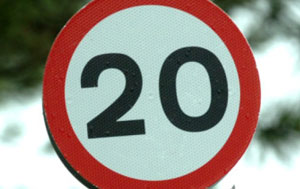
Investigating Road Traffic Casualties in Leeds
Written by: Liam Bolton, ODI Leeds, 24/09/2015
Find out more: Product / Website
This year ODI Leeds embarked on an ambitious project focusing on road traffic casualties in the city.
Using open data from Leeds Data Mill, I began exploring the Road Traffic Accidents datasets available on the portal. This initially culminated in a dot density map of cycling casualties in the city.
What immediately became apparent was that Headingley Lane and Otley Road had a serious problem with cycling crashes. Four other blackspots were identified: Kirkstall Road, Upland Road, Horsforth Hall Park and Bayswater Road. However, the sheer scale of the problem at Headingley Lane and Otley Road spurred a larger-scale investigation into the phenomenon of road traffic casualties.
Taking a journalistic approach of identifying the Who, What, Where and When of the casualties, I undertook some statistical analysis using programming language ‘R’, and created a series of data visualisations to explore the data with Tableau. This tool, one of my first projects as an Associate at ODI Leeds, can be used by anyone to dive into the public health issue that is road casualties and explore their own questions and assumptions about the problem.
Initial findings
One of the surprising finds was that cycling casualties had increased by 37% between 2009 and 2014 while car crashes had fallen by 23% over the same period.
Diving into the demographics of the problem, I found that 37% of casualties over those years were aged 25 and younger. The two ages with the highest number of pedestrian casualties, a problem often overlooked by the media, were 12 and 11; the single age with the highest number was 20.
Mapping crashes involving other vehicles revealed that Vicar Lane and the Headrow are major blackspots for casualties. Looking at the location of pedestrian casualties, it was clear that they tend to cluster around schools, with areas of Beckett Street, Roundhay Road and Otley Road problematic areas.
Furthermore, exploring when road traffic accidents occurred during the week revealed that casualty numbers gradually rise from Monday, peaking on Friday before declining sharply over the weekend. Interestingly, weather conditions had a decidedly small impact on the number of casualties – only 12% of casualties were recorded in Leeds as having took place during conditions classified other than “Fine”.
‘Vision Zero’ aspiration
Following some interest in the work, ODI Leeds and myself are undertaking a campaign to bring more attention to the problem. Working alongside Rob Greenland, Co-director Social Business Brokers CIC, Stuart Clarke of Bloom and Leeds Data Mill, we’ll be turning the analysis into a long-term project.
Following a discussion on ‘Road Casualty Reduction and 20mph Speed Limits in Leeds’, the analysis has been forwarded to the Leeds City Council Scrutiny Board (City Development) for their consideration. We have additionally made moves to analyse pedestrian casualties in more depth, provide more detailed data about casualties and to look into the effect of speeding. ODI Leeds is ultimately hoping to build tools that make Leeds’ streets safer and, in the process, emulate the ‘Vision Zero’ initiative pioneered in the U.S. and Sweden, which aims to bring the number of fatalities or serious injuries to zero.
Road Traffic Casualty Visualisation
